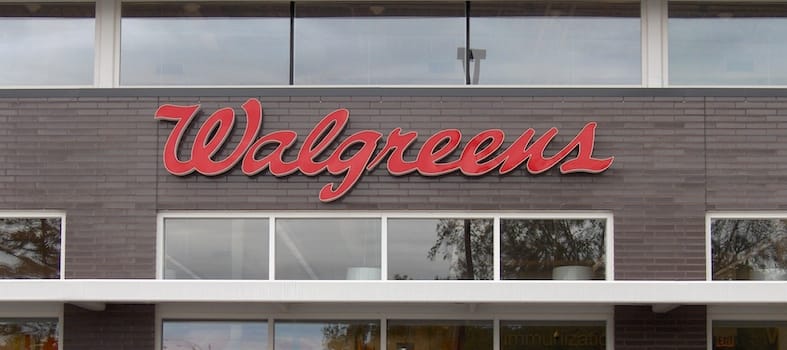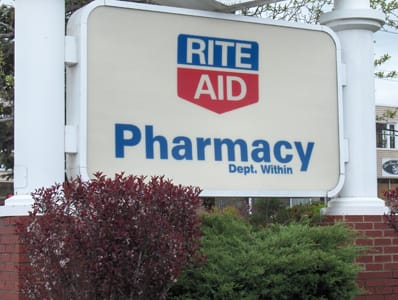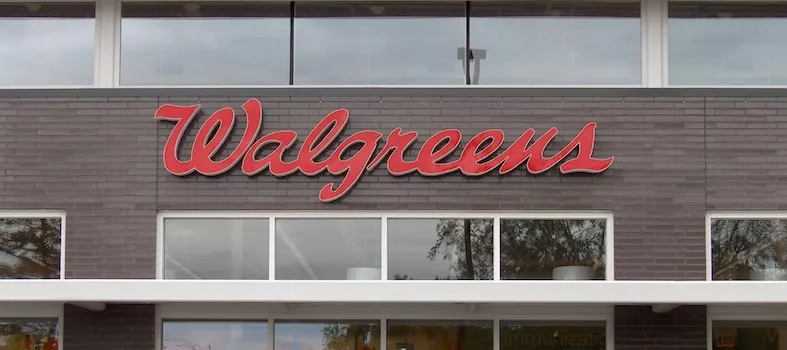
DEERFIELD, Ill. — Walgreens Boots Alliance (WBA) beat Wall Street’s adjusted earnings per share forecast for its 2017 fourth quarter and fiscal year, with pharmacy results helping boost sales for both periods.
However, WBA said Wednesday that costs related to the unsuccessful deal to acquire Rite Aid Corp. impacted its bottom line and pulled down GAAP net income, with much of the hit affecting fourth-quarter results.
Also on Wednesday, WBA outlined integration and conversion costs from its $4.375 billion deal to buy 1,932 Rite Aid stores, three distribution centers and related assets. In line with that agreement, WBA announced that it will undertake an 18-month program next spring to optimize its U.S. store locations.
For the fourth quarter ended Aug. 31, WBA posted GAAP net earnings of $802 million, or 76 cents per diluted share, compared with $1.03 billion, or 95 cents per diluted share, a year earlier. The company said decreases reflect Rite Aid-related expenses, including a $325 million merger termination fee.
Adjusted net income for the quarter came in at $1.385 billion, or $1.31 per diluted share, versus $1.166 billion, or $1.07 per diluted share, in the prior-year period.
Analysts, on average, projected fourth-quarter adjusted EPS at $1.21, with estimates ranging from a low of $1.15 to a high of $1.25, according to Thomson Reuters.

Stefano Pessina
WBA’s sales in the fourth quarter totaled nearly $30.15 billion, up 5.3% from $28.64 billion a year ago quarter. On a constant currency basis, revenue rose 6.4%, the company said.
In the Retail Pharmacy USA division, which includes Walgreens and Duane Reade drug stores, fourth-quarter sales climbed 7.5% to $22.3 billion from $20.75 billion a year earlier.
Pharmacy revenue, which represented 72.1% of the division’s sales in the quarter, rose 12.6% year over year, mainly from higher prescription volumes, including mail and central specialty with the formation of AllianceRx Walgreens Prime, WBA said. Front-end sales fell 3.9%, in part due to the previously announced closure of certain e-commerce operations.
Same-store sales in the fourth quarter were up 3.1%, reflecting a 5.6% gain the pharmacy and a 2.1% decrease in the front end.
WBA said the comparable-store sales decline in the front end stemmed in part from changes in promotional plans. Decreases in the consumables, general merchandise and personal care category were partially offset by growth in beauty care and health and wellness items, according to the company.
Comparable pharmacy sales were negatively impacted by reimbursement pressure and introductions of new generic drugs, partially offset by branded drug inflation, WBA reported.
In the quarter, the Retail Pharmacy USA division filled 250.2 million prescriptions (including immunizations), adjusted to 30-day equivalents, up 9% from the year-ago period. Prescriptions count in comparable stores rose 8.7%, primarily from Medicare Part D growth and volume growth from strategic pharmacy partnerships.
WBA said the division’s retail prescription market share in the fourth quarter, on a 30-day adjusted basis, grew about 120 basis points year over year to 20.5%, according to QuintilesIMS — the business unit’s highest reported quarterly retail prescription market share for a second consecutive quarter.
“We are pleased to report the company has performed well, with our businesses delivering significant progress while managing against ongoing prescription reimbursement pressure and competing in fast-changing retail environments,” executive vice chairman and chief executive officer Stefano Pessina said in a statement. “We look forward to building on this solid underlying growth in the year to come, enhanced by the expansion of our U.S. retail pharmacy network through the upcoming purchases of Rite Aid stores.”
For the full 2017 fiscal year, GAAP net income was $4.078 billion, or $3.78 per diluted share, compared with $4.173 billion, or $3.82 per diluted share, in fiscal 2016. WBA said the decreases primarily reflects Rite Aid-related costs. Adjusted net earnings were $5.5 billion, or $5.10 per diluted share, versus about $5.01 billion, or $4.59 per diluted share, a year earlier.

WBA said it expects to wrap up integration of acquired Rite Aid stores within the next three years.
Analysts’ consensus adjusted EPS forecast was $5.00, with projections running from a low of $4.94 to a high of $5.04, according to Thomson Reuters.
WBA’s overall fiscal 2017 sales came in at $118.21 billion, up 0.7% from $117.35 billion in 2016. On a constant currency basis, sales increased 3.3%, the company said.
Revenue in the Retail Pharmacy USA division were $87.3 billion for the full year, up 4.2% from $83.8 billion a year ago.
WBA reported that the first few Rite Aid stores as part of the deal announced in June, and cleared by the Federal Trade Commission in September, have been acquired in the past week. Ownership of the rest of the stores is slated to be transferred in phases and wrapped up by spring 2018.
Integration of the acquired Rite Aid stores, distribution centers and other assets is expected to be completed within the next three years at cost of about $750 million, WBA said. Another $500 million in capital is earmarked for store conversions and related activities, according to the company.
WBA noted that, following FTC approval of the Rite Aid store acquisition, it conducted a full review of its projected combined U.S. store portfolio to help develop a store location optimization program. That program is expected to take 18 months, starting in the spring of 2018, and result in estimated pretax charges (GAAP) of about $450 million, WBA said. Cost savings from the program are pegged at roughly $300 million per year and are expected to be realized by the end of fiscal 2020.
Earlier this month, WBA completed a $5 billion share repurchase program that was announced in June 2017. The company expanded the program on Tuesday by another $1 billion.
Looking ahead, WBA forecast fiscal 2018 adjusted EPS (diluted) at $5.40 to $5.70. On average, analysts project the company’s 2018 adjusted EPS at $5.47, with estimates ranging from a low of $5.20 to $5.70, according to Thomson Reuters.









